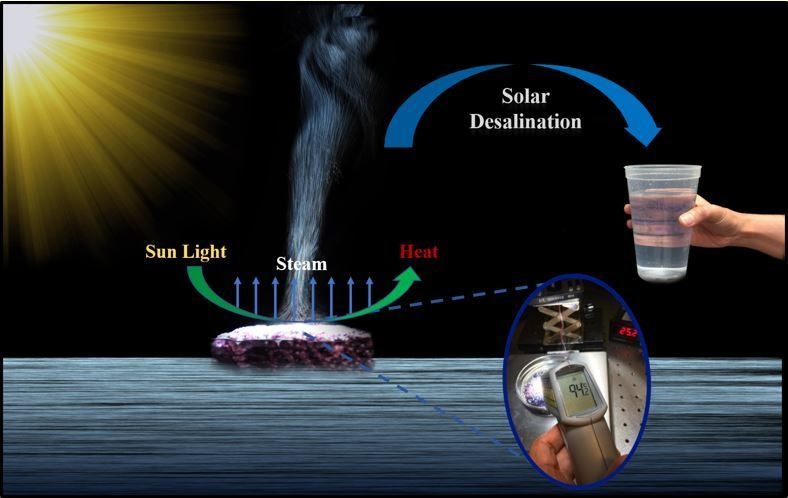Mar 20 2019
With over two billion people lacking access to safe potable water, the United Nations estimates that by 2050, there will be an almost one-third increase in the global demand for water.
 The focus of El-Shall’s research has been to drive down the cost of materials and increase the efficiency of converting solar energy to heat. (Image credit: Virginia Commonwealth University)
The focus of El-Shall’s research has been to drive down the cost of materials and increase the efficiency of converting solar energy to heat. (Image credit: Virginia Commonwealth University)
At Virginia Commonwealth University, scientists are striving to create technology that is regarded as one of the most potential solutions to this worldwide crisis.
Water is becoming the world’s most important resource, more than oil. The next conflict is going to be over water. Because [certain parts of the world are] running out of clean water. We need to solve this problem.
M. Samy El-Shall, PhD, Professor and Chair, Department of Chemistry, College of Humanities and Sciences, Virginia Commonwealth University
El-Shall has been carrying out studies on enhancing the process of solar-powered water desalination, which is basically the technology that eliminates salt from seawater by acquiring radiation from the sun and converting it into heat energy, which in turn evaporates the water, where the resulting steam is subsequently captured to be condensed into freshwater.
Although this process is not new, the technology confronts problems when developing to a level that would help deal with the world’s water shortage. El-Shall’s research has focused on reducing the cost of materials and increasing the efficiency of turning solar energy into heat.
At present, solar thermal systems depend on aluminum or copper to harvest solar energy, but these materials are costly, not very efficient in absorbing the solar spectrum, and have restricted availability. Thus, existing solar-powered desalination devices have low water productivity and low efficiency.
El-Shall and his research collaborators have created a different, more cost-effective, and efficient method for solar steam generation.
The cost of the materials is still high, and we use, for example, efficient materials like gold particles and silver particles, but they are expensive. So we’re trying to avoid that by moving to much less expensive materials.
M. Samy El-Shall, PhD, Professor and Chair, Department of Chemistry, College of Humanities and Sciences, Virginia Commonwealth University
The team basically carbonized cotton sheets that float above a surface pool of seawater. The material has wide solar absorption properties and is porous, flexible, lightweight, and more economical.
“The technology we’re developing only relies on the materials and the sun,” stated El-Shall. “The materials have several requirements. They have to float on the surface of water and they have to absorb all the radiation from the sun, across many different wavelengths, and then convert that radiation to heat. That heat will create the steam, and that steam can then be condensed, basically to form water. You can condense it just on a cold surface. It’s a straightforward process.”
The process being developed by El-Shall and his team could be upgraded from the household level into a huge production facility.
If you are in a place where there is no water and you have seawater, you could use a small, portable unit to convert it to a few liters a day or something like that. You could then regenerate this unit, and then use it again. And on the other hand, you could use this technology on a very large scale, [such as] desalination plants.
M. Samy El-Shall, PhD, Professor and Chair, Department of Chemistry, College of Humanities and Sciences, Virginia Commonwealth University
In addition to helping to solve the global water crisis, solar steam generation and solar water desalination have other applications, such as solar crop-drying technology, industrial purposes, and water purification in remote areas.
A considerable amount of research into solar-powered desalination is being carried out across the globe, predominantly in the Middle East.
The direction now is to use solar because most of these places you have good solar [conditions]. So if this technology becomes more advanced and cheaper to use, I think this is the way to go. Saudi Arabia for example, is investing billions of dollars for solar desalination.
M. Samy El-Shall, PhD, Professor and Chair, Department of Chemistry, College of Humanities and Sciences, Virginia Commonwealth University